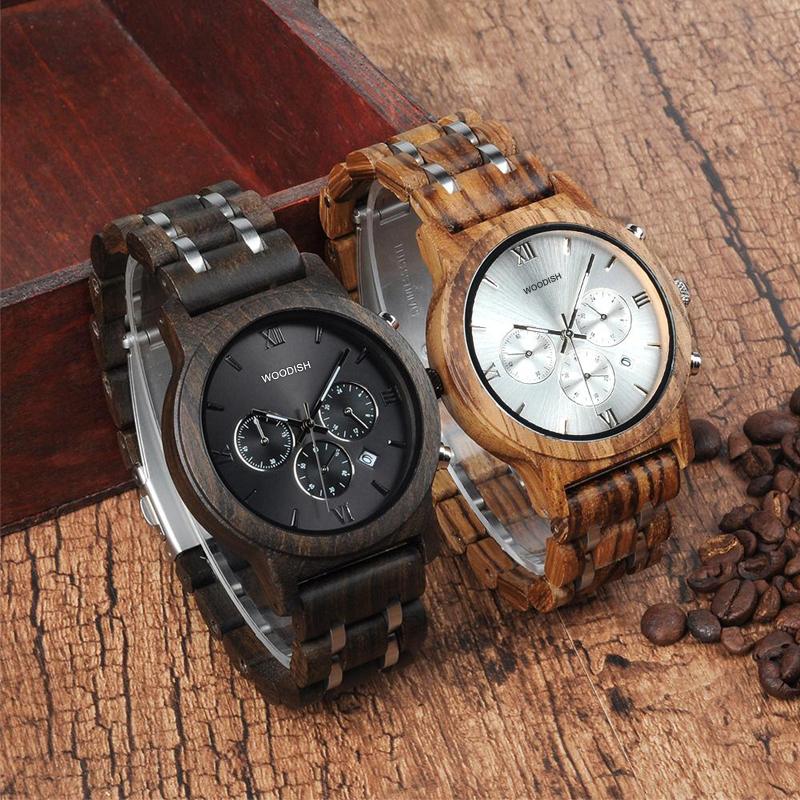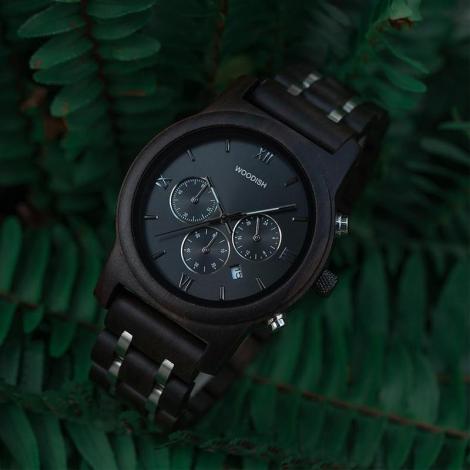Tuesday, May 24, 2022
How did people used to be with wrist watches in the past? | Wooden Watches for Men & Woman
How did people used to be with wrist watches in the past?
Imagine for a moment that there are no clocks around you. You don’t have a wrist watch, a desk clock, or a wall clock. You wouldn’t know when it’s bedtime, work time or school time, right? Now let’s go back many, many years ago. How did people measure time before they invented the clocks we use today?
People in prehistoric times divided time into only two parts: day and night. Then they noticed that the shadow lengths of the objects changed during the day. Realizing this, they tried to measure time by tracking the shadow length and direction of a stick they had stuck in the ground. These were the first examples of sundials.
The ancient Egyptians developed sundials and were able to measure time more precisely. The Chinese, Romans, and Greeks also developed different sundials and used them.
Sundials usually consisted of a circular stone and a pointing stick in the middle. There were numbers and symbols showing the time on the stone. They determined the time according to which numbers and symbols the shadow of the pointing stick corresponded to. However, sundials could not be used at night and on cloudy days.
People have developed different clocks throughout history: water clock, sandglass and candle clock … Previously, water clocks consisted of a large vessel. These vessels, which had markings on the inner surface, were filled with water. The water was slowly pouring out through a small hole in the bottom of the bowl. As the water level in the vessel decreased, people could tell how much time had passed. Water clocks that worked in other ways were also made. However, very precise measurements could not be made with water clocks.
The working principle of candle clocks was similar to that of water clocks. A very long candle marked at regular intervals was used to measure time. After this candle was lit, it slowly melted. You could tell how much time had passed by looking at the markings on the candle. There were also different kinds of candle clocks.
Hourglasses also known as sandglasses consisted of a two-section glass chamber. There was some fine sand in this chamber. This sand always flowed from the upper chamber to the lower chamber in the same time. The hourglass was turned upside down when it was desired to be used again. Thus, the sand would start flowing back towards the lower chamber. But hourglasses could only measure certain time zones.
None of these clock types, which were used until the 1300s, showed the exact time. In these years, the first mechanical watches began to be made. These clocks, without hour and minute hands, were unlike those of today and were very large. These were making sounds at certain time intervals. For example, the gong or bell would ring to announce the time. These clocks could lose time, sometimes for a few minutes, sometimes for hours. It could even be that it stopped on its own. In such cases, they were readjusted by looking at the sundial. Later, pendulum clocks were found. At this time, there were also the hour and minute hands. Over time, clocks have become smaller. In the 1500s, clocks began to be made in sizes that could be carried. Now watches were produced that could fit even in the pockets of clothes. The watches that are constantly renewed and developed that can be worn on the wrist were made in the 1800s.
Beginning in the 1900s, other types of clocks entered our lives. Battery-powered quartz watches and atomic clocks, which can measure time with little error, are two of them. Who knows, how will the tools we use to measure time change with the developing technology?
Saturday, May 21, 2022
Waterproof wooden watch in South Africa
ARE THE WOODEN WATCHES WATERPROOF?
If you deciding to buy a wood watch; then one of the most important questions in your mind appears should be the watch is waterproof. Now, we will answer this question. Resistance against depth is measured as bar which is also atmospheric pressure unit, this is called as ATM. Resistance of Bamboo Watches for Women is 3 ATM. Bamboo Watch for men are water proof, you can wash your hands with your wooden watch, go out fishing and also you may walk at rainy weather.
When the words wooden watch and waterproofness come together, it is suspected that the nature of the wood may be a problem in contact with water. “I can walk with my wooden wristwatch in the rain” or “Do I have to remove my wooden wristwatch while washing my hands?” But don’t be afraid, if it were so, we could not have gained a place in the market with our fashion watches which have been very popular and fashionable recently As Bobo Bird Wooden Watches, we take some precautions to minimize sensitivity of wooden in case of contact with water. During and after production, special heat treatment process is applied to wood parts of our watches and humidity possibility is prevented. If we have not taken these precautions, you would have been right about suspecting.
WATER RESISTANCE STANDARDS FOR A WATCH
50 meters mark does not mean that you can use the watch diving to a depth 50 meters. The ATM standards refer to just static pressure on your watch. The watch which is suitable for swimming and diving is marked as 200M-1000M, it means that you can use the watch underwater.
Water resistance unit is named as ATM or Meters; this means that the watch has been tested under laboratory conditions and passed the tests for a short time period and only at the specific depth. During usage the actual water pressure is greater than the static pressure. So, buying a tested and approved waterproof wooden watch is important for sustainability and user satisfaction.
Waterproof wooden watch
WATER RESISTANCE WOOD WATCH
To improve water resistance feature of wood, tempering operations are applied to all of wooden parts during production process. Another protective action is Tung oil application as final production process to make the wood more resistant against water. These operations decreases humidity sensitivity on wood and these production methods have been applied on all Bamboo Wooden Watches. In this way, water splash on the watch does not create any problem. When the wooden watch is used considering these conditions, it will have a long-lasting structure. It should be noted that wood has a natural structure. We would like to emphasize that WoodishSA established in 2018 and did not receive any customer complaint about waterproofing within this time period??
When you wear a WoodishSA‘s wood watch, you may wash your hands confidently and without concern about water damage thanks to waterproof wood watches for men and women.
Visit our main page for more information;
For questions about this article, you can send e-mail to sales@woodish.co.za contact address.
You can see an independent review for the best seller wooden watch from Men’s Collection below.
Is There Wooden Watches, Which is Waterproof? | Wooden Watches for Men & Woman
Wooden Watch Style: Where to Find Your Perfect Timepiece – Woodish
Wooden Watch Style: Where to Find Your Perfect Timepiece – Woodish
-
Women's Natural Bamboo Wood Watch - O10 – WoodishSA : WOMEN'S NATURAL BAMBOO WOOD WATCH - O10 Regular priceR 1,499.00 Sale priceR 1,...
-
Tungsten rings are undoubtedly rising in popularity especially when it comes to wedding bands. Ranking 8-9 on the Mohs scale, tungsten...
-
Gold, silver and platinum have ruled adornments plan as the decision metals for buyers. But there are more metals than just the big three, a...




